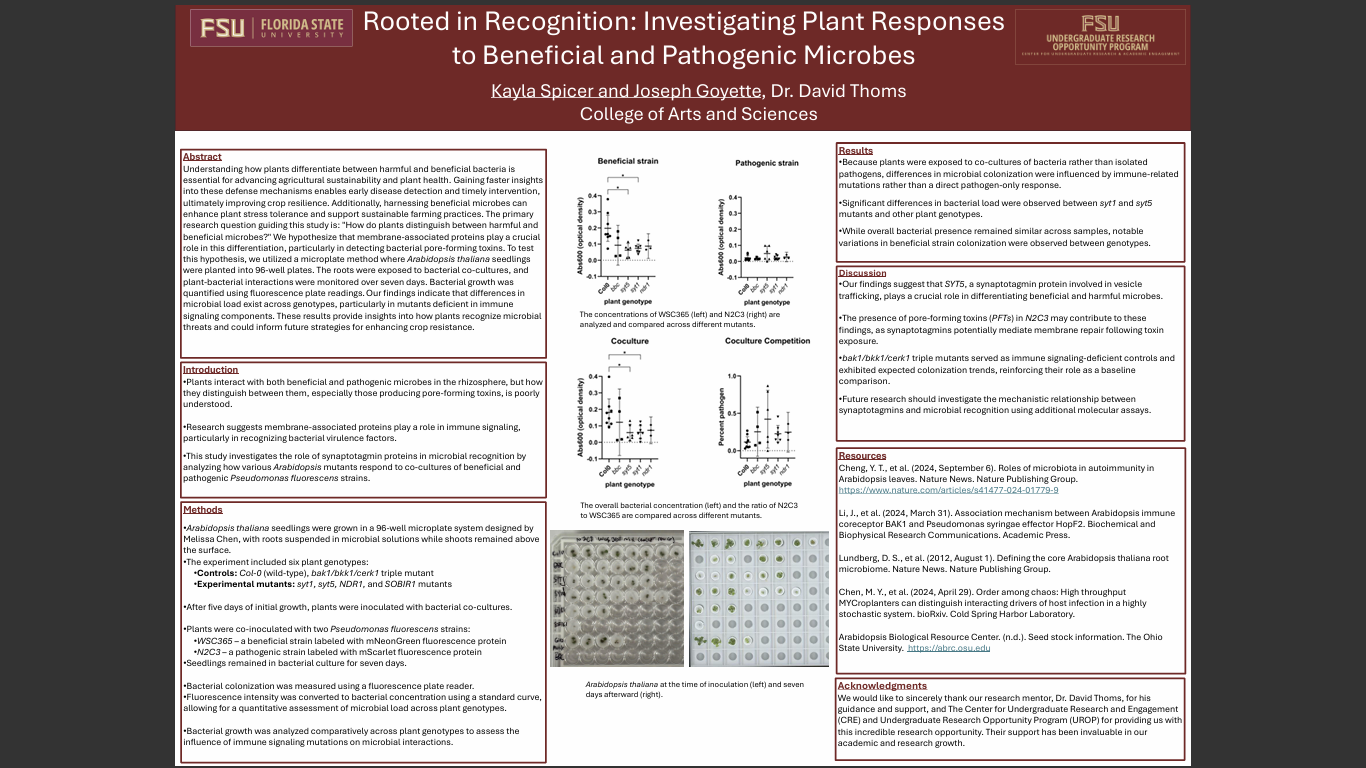Research Symposium
25th annual Undergraduate Research Symposium, April 1, 2025
Kayla Spicer Poster Session 1: 9:30 am - 10:30 am/ Poster #169
BIO
Kayla Spicer is a third-year Biological Science major at Florida State University with a strong passion for microbiology. Born and raised in Miami, FL, she is driven by a deep curiosity about microbial interactions and their implications for human health, agriculture, and environmental sustainability. With a long-term goal of pursuing research in graduate school, Kayla is committed to expanding her expertise in microbiology and contributing to advancements in the field.
An ambitious and dedicated student, Kayla is an active member of the organization, Alliance for Black Women, where she fosters community engagement and leadership. She also enjoys reading, writing, and volunteering, complementing her analytical and problem-solving skills in scientific research. Kayla is eager to gain hands-on experience in microbiology research, particularly in areas related to microbial pathogenesis, antibiotic resistance, and plant-microbe interactions. She looks forward to contributing to innovative scientific discoveries and advancing knowledge in microbiology through dedicated research and collaboration.
Plant Responses to Beneficial and Pathogenic Microbes
Authors: Kayla Spicer, Dr. David ThomsStudent Major: Biological Sciences
Mentor: Dr. David Thoms
Mentor's Department: Biology Department Mentor's College: College of Arts and Sciences Co-Presenters: Joseph Goyette
Abstract
Understanding how plants differentiate between harmful and beneficial bacteria is essential for advancing agricultural sustainability and plant health. Gaining faster insights into these defense mechanisms enables early disease detection and timely intervention, ultimately improving crop resilience. Additionally, harnessing beneficial microbes can enhance plant stress tolerance and support sustainable farming practices. The primary research question guiding this study is: "How do plants distinguish between harmful and beneficial microbes?" We hypothesize that pathways involved in membrane repair play a crucial role in this differentiation, specifically by detecting bacteria that produce pore-forming toxins versus those that do not. To test this hypothesis, we utilize the microplate method, in which seeds are planted into 96-well plates, allowing plants to grow with their roots submerged in the wells while the plants/leaves are suspended above them. The roots are exposed to different treatments, either pathogenic or beneficial bacteria, and plant growth is monitored over several weeks. Bacterial growth is quantified by absorbance and fluorescence. Expected findings suggest that plants exposed to pathogenic bacteria producing pore-forming toxins will exhibit reduced growth, increased absorbance and fluorescence, and potential membrane damage. In contrast, those exposed to beneficial bacteria will maintain standard growth patterns and lower levels of absorbance and fluorescence. These results will provide valuable insights into how plants recognize microbial threats and could inform future strategies for enhancing crop resistance to pathogens.
Keywords: Plant Pathology, Biological Research, Microbiology, FSU Research, Women In STEM


